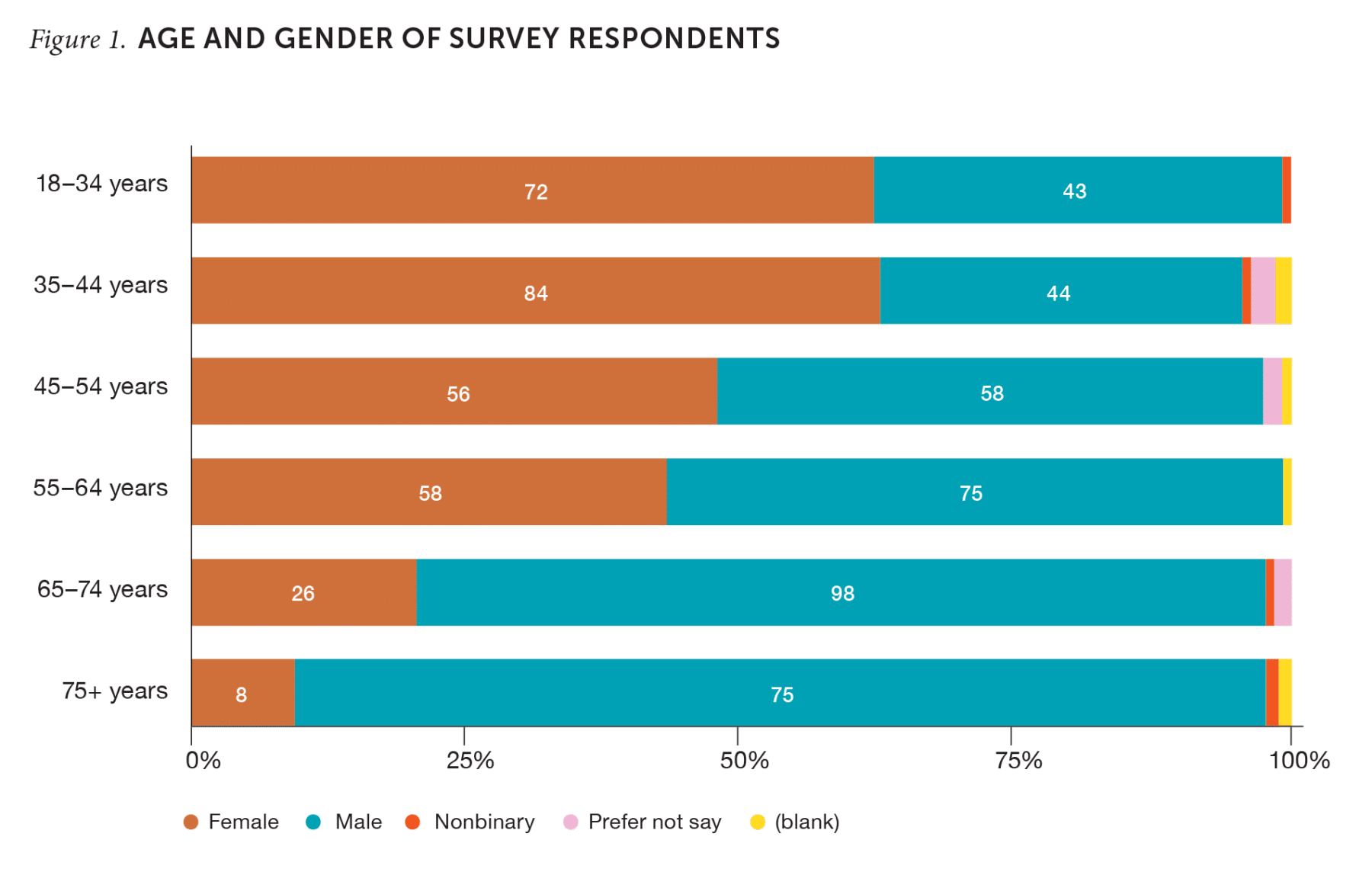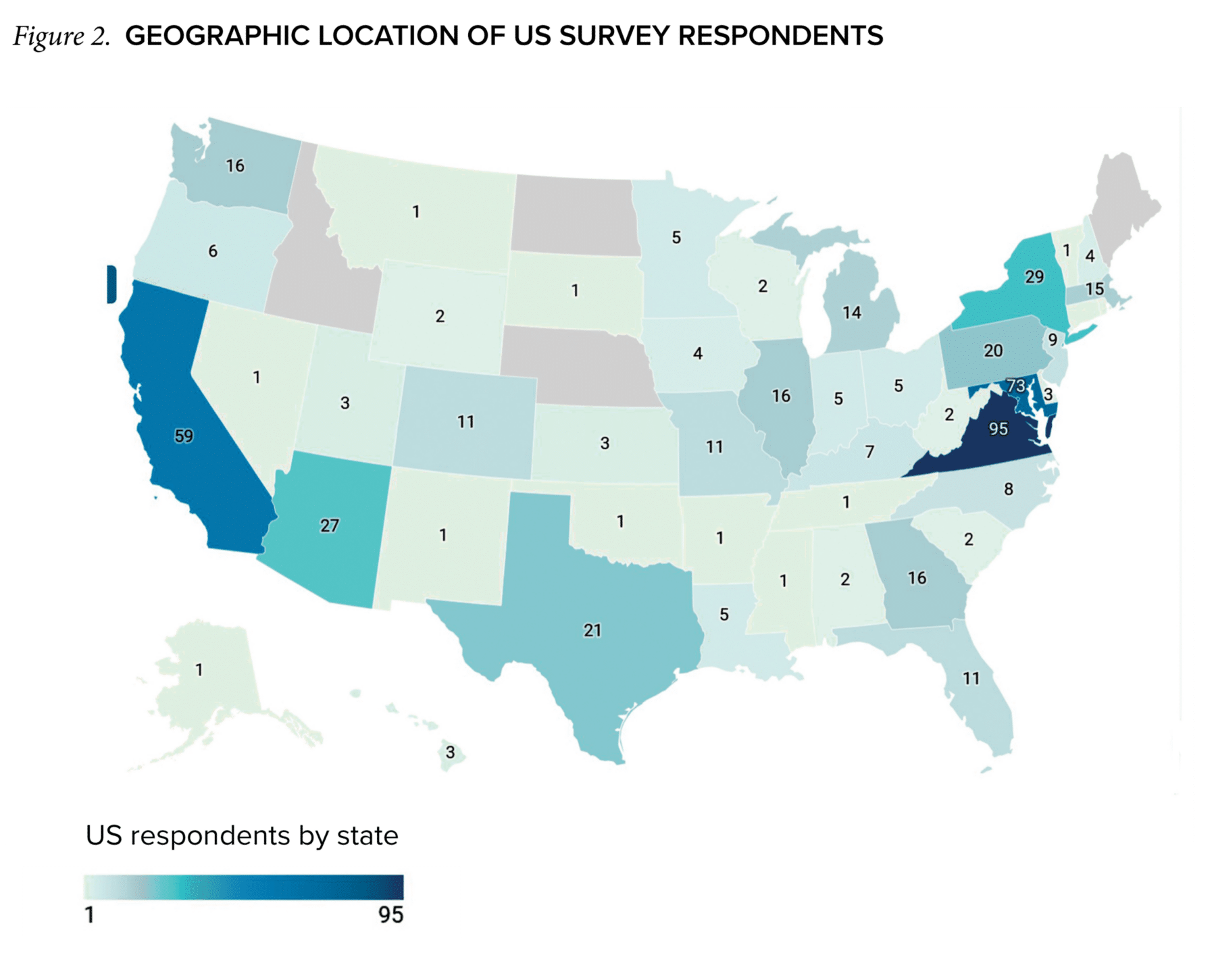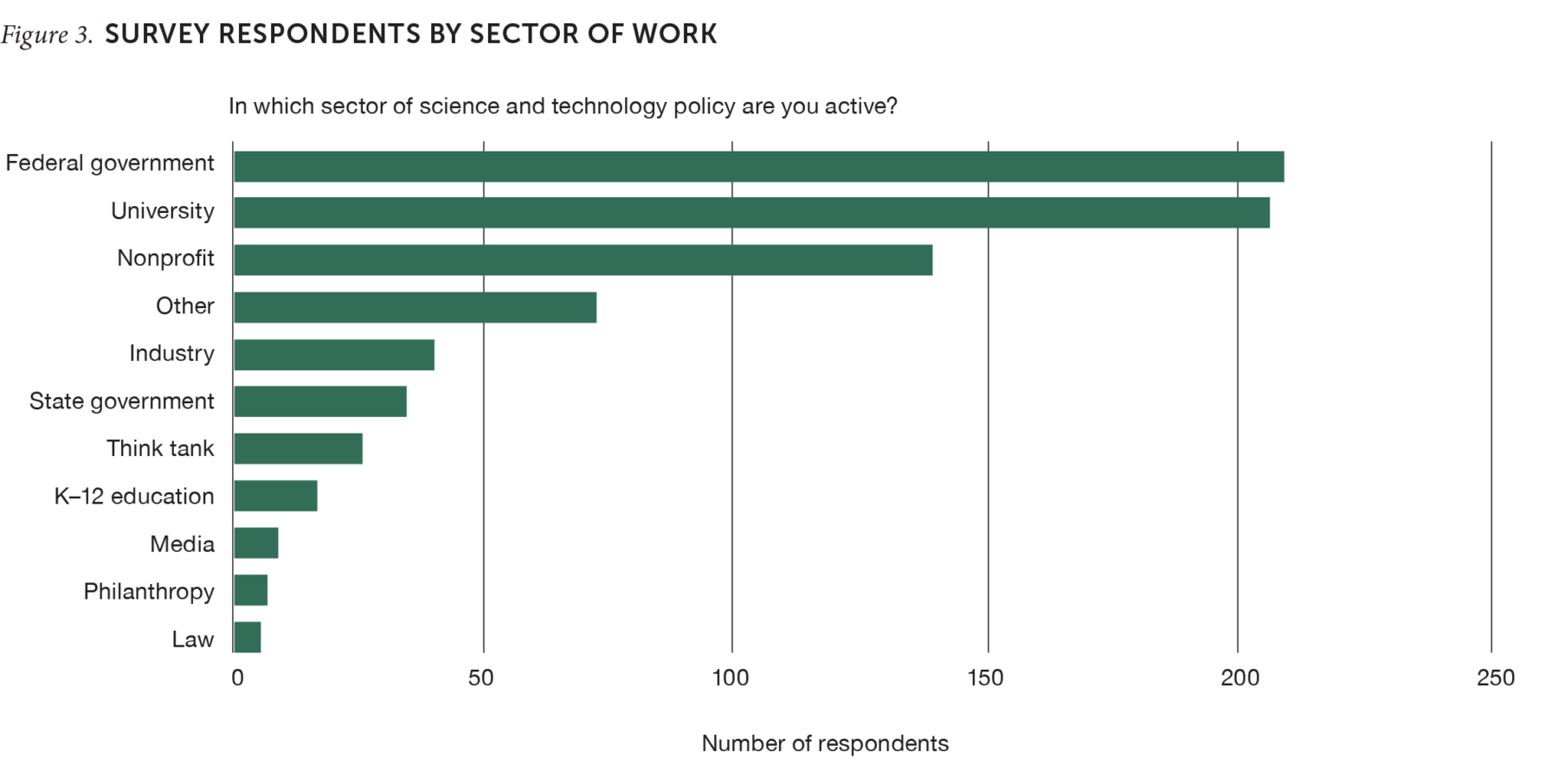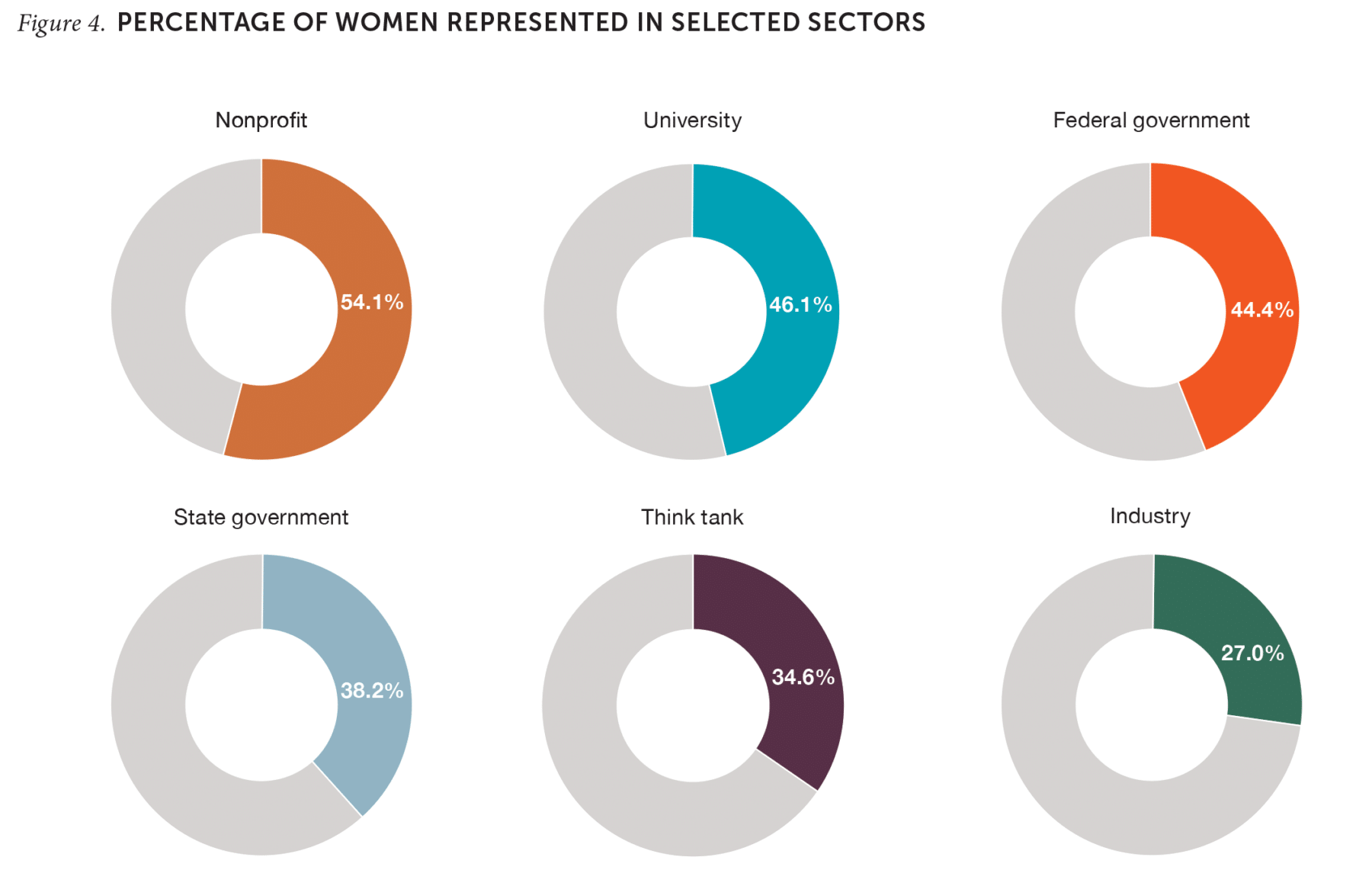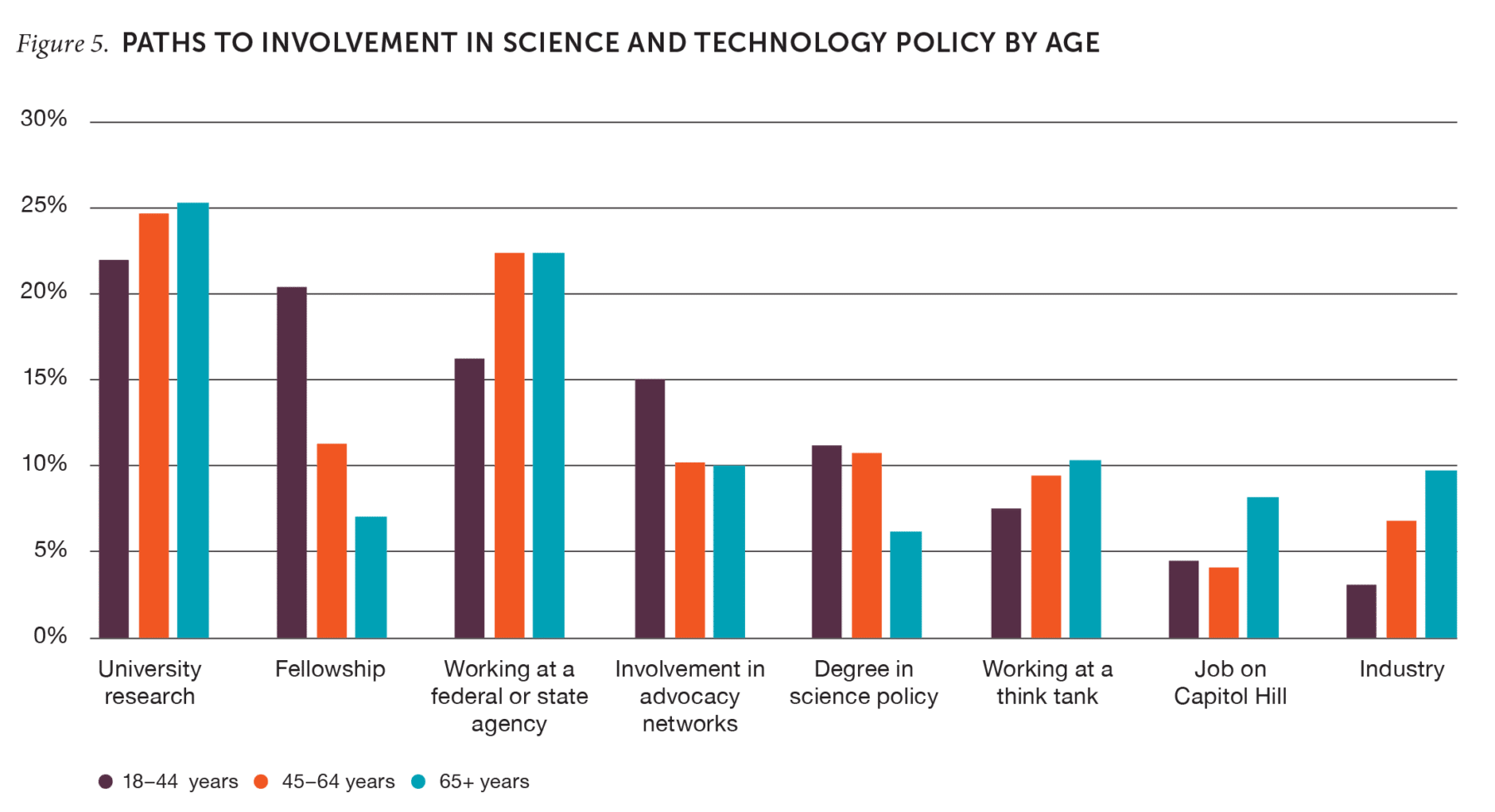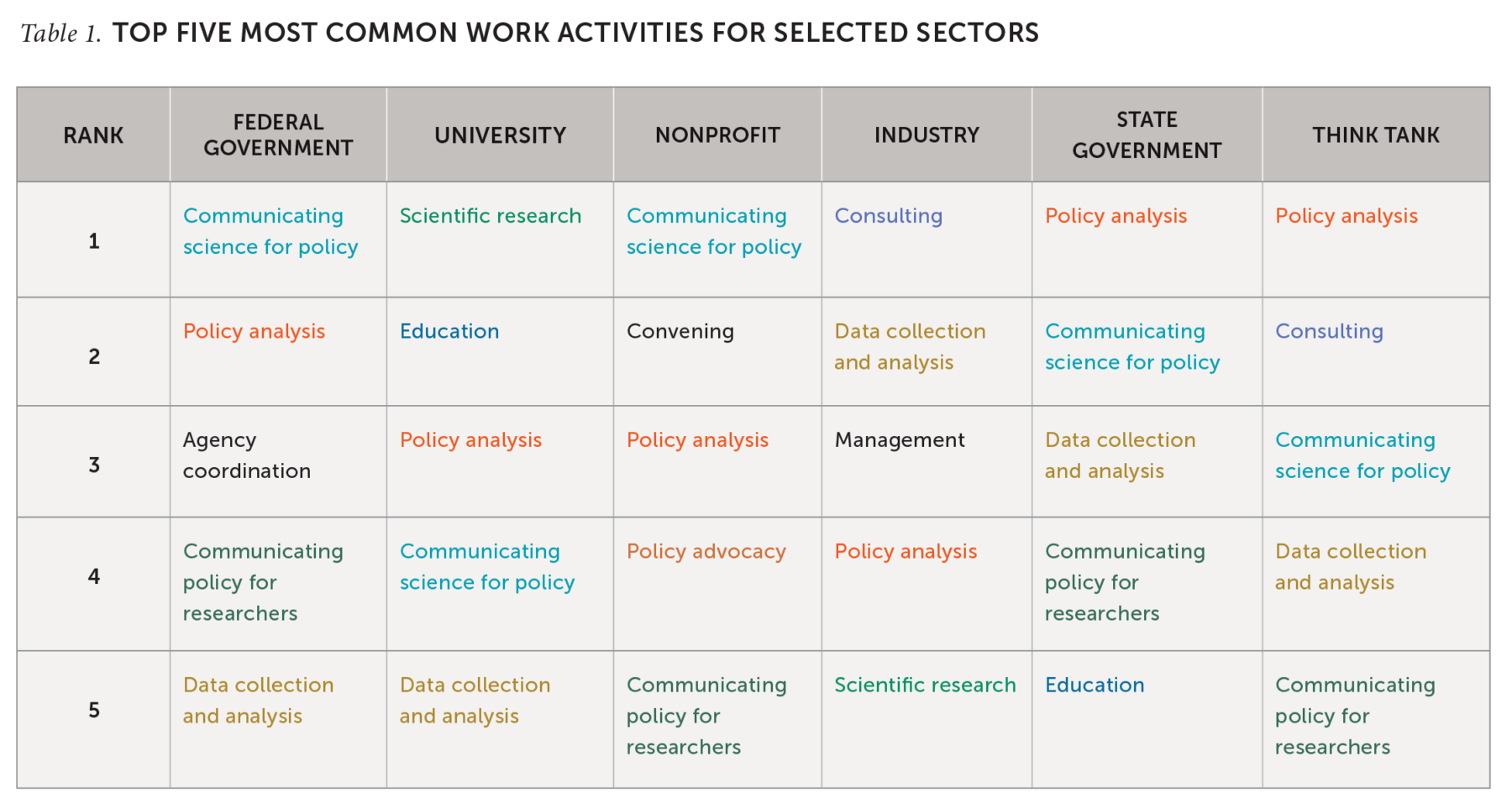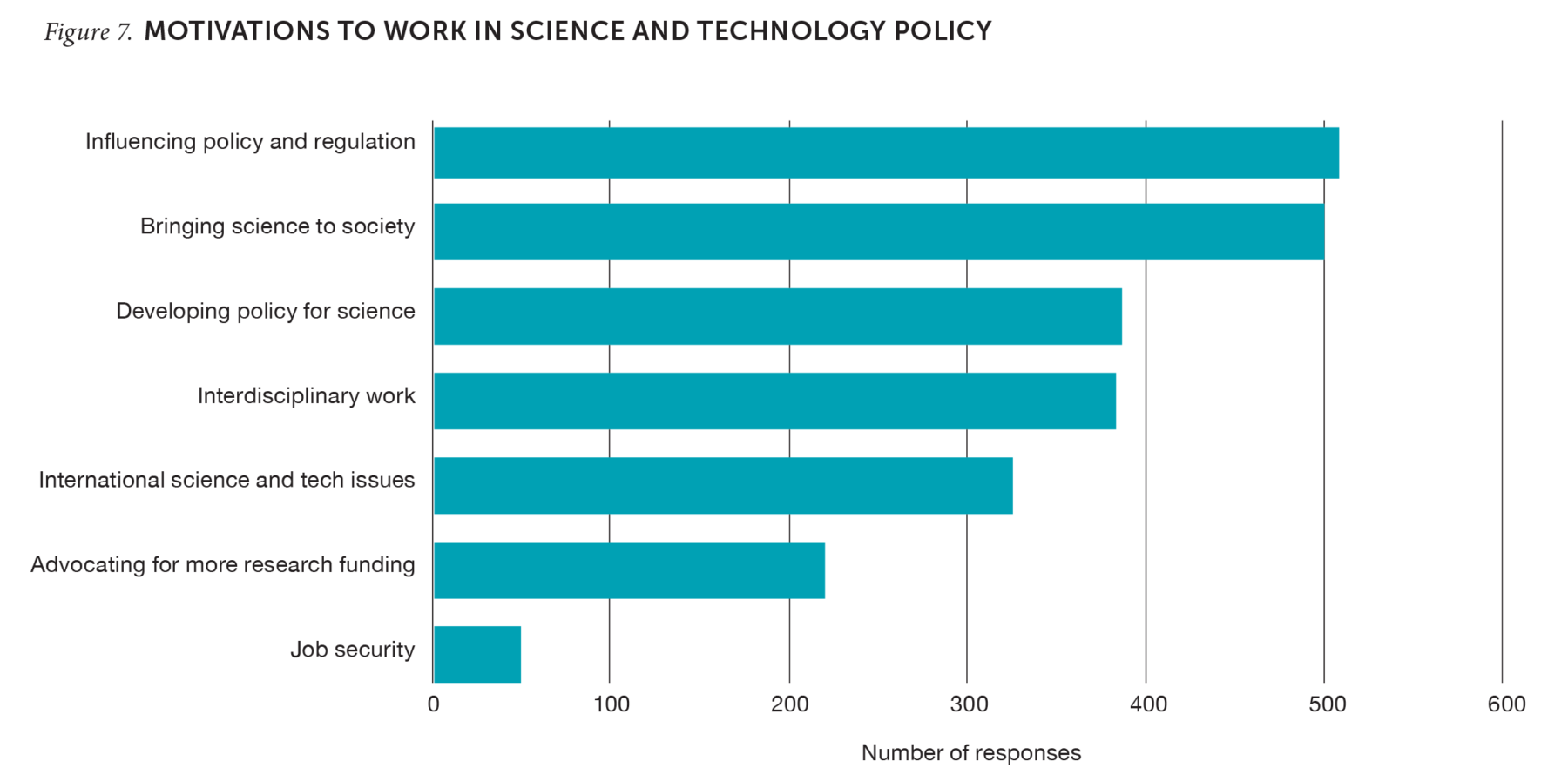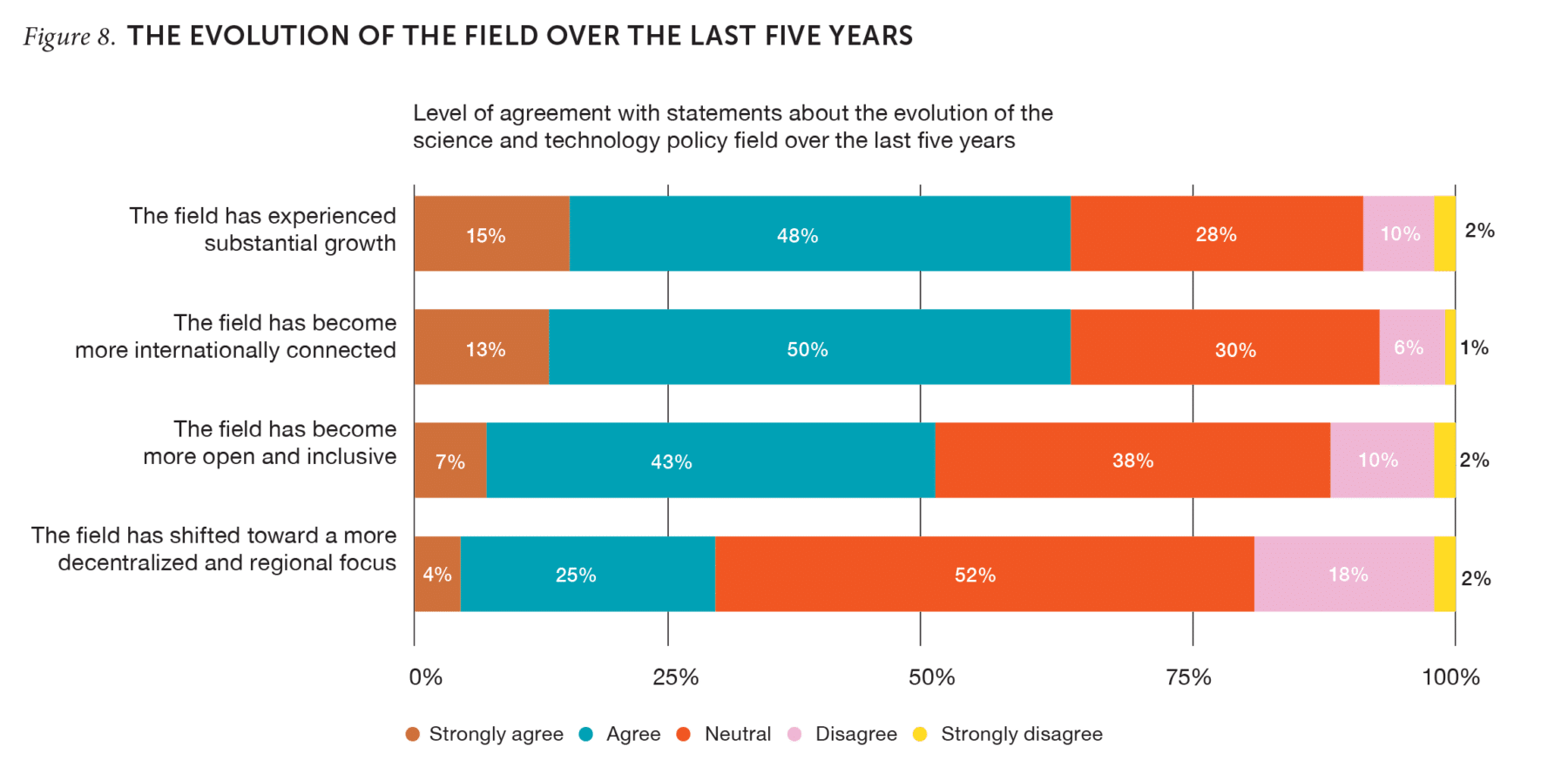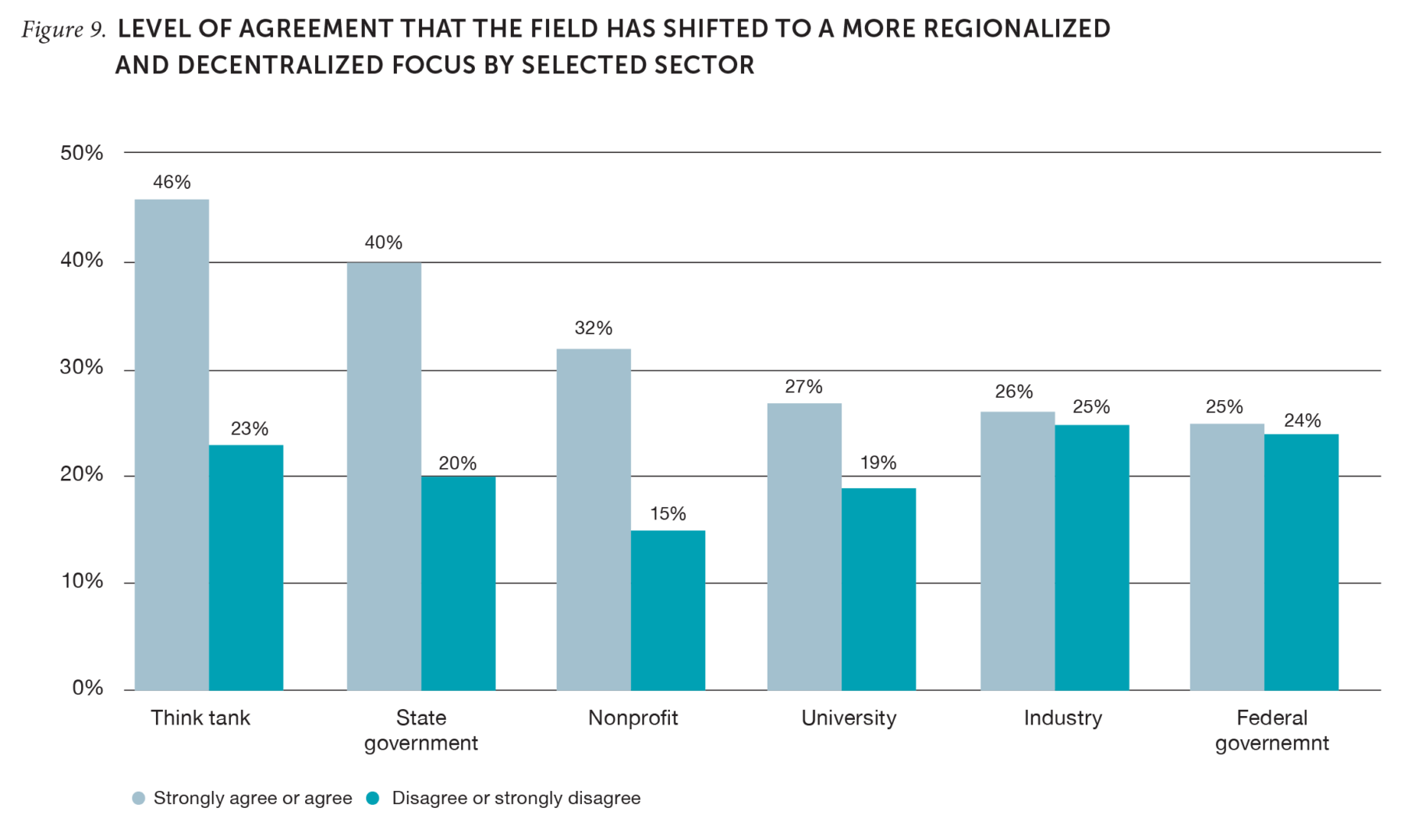Who Does Science and Technology Policy?
To celebrate the magazine’s fortieth year of publication, the Issues team wanted a better understanding of who does science and technology policy, and what it means to even say you’re doing it. Between May 15 and August 15, 2024, Issues ran a survey to gain a deeper understanding of the field of science and technology (S&T) policy today, including career paths, motivations, activities, and opinions on how the field is changing.
The survey was disseminated in Issues’ newsletters and social media, and by partners at the National Academies of Sciences, Engineering, and Medicine; Arizona State University; FYI at the American Institute of Physics; the National Science Policy Network; and other organizations. This method of dissemination may have introduced bias in who responded to the survey—survey-takers reached via science policy networks are already likely to self-identify as members of the S&T policy community—but 784 people in the field took the time to fill it out. To keep the survey brief, most terms used were not defined, which may have encouraged subjective interpretation. It’s also important to note that the differences described were not tested for statistical significance, and that some results may not sum due to rounding.
Who does science and technology policy?
Fifty-five percent of survey respondents identified as male and 43% as female. The remaining 2% identified as nonbinary or preferred not to identify gender. These results are closer to the gender divide across the entire US civilian labor force (53% male, 47% female) than to the representation of women in all STEM occupations (only 35% in 2021). Respondents ranged in age from late teens to their 90s. Women were increasingly represented in younger age groups, comprising only 16% of respondents 65 years old or older, but 64% of those less than 45 years old (Figure 1). This mirrors trends in the overall college-educated labor force, where women now outnumber men.
Women were increasingly represented in younger age groups, comprising only 16% of respondents 65 years old or older, but 64% of those less than 45 years old.
Survey respondents hailed from 40 different countries on all continents except Antarctica, though the vast majority (83%) were from the United States. Within the United States, respondents came from 46 states and the District of Columbia (Figure 2).
The majority of survey respondents (71%) indicated science and/or technology policy to be their part- or full-time job. Nearly three-quarters of respondents reported that they work in one of three sectors: the federal government (27%), university (27%), or nonprofit (18%) (Figure 3). Women made up close to half of the respondents in each of these sectors but were underrepresented in others (Figure 4). Age distribution varied relatively little across sectors, although respondents from industry tended to be older than respondents from other sectors.
What does a science and technology policy career look like?
There are many pathways into science policy careers—as evident from the stories told by guests on Issues’ podcast series Science Policy IRL. Among survey respondents, the most common pathways were through “university research” and “working at a federal or state agency.” But career pathways varied by age (Figure 5). Younger S&T policy professionals were more likely to have earned degrees in science policy. They were also more likely to have started their involvement through a fellowship or engagement with advocacy networks. Older professionals were more likely to have become involved through their work, whether at federal or state agencies, think tanks, or jobs on Capitol Hill. This may indicate an increasing difficulty entering the field directly through work without formal credentials or nonemployment experience. It is worth noting that respondents were able to select multiple options for this question, so further analysis of the combinations survey-takers chose could reveal other patterns.
In terms of what science and technology policy careers entail, respondents on average indicated between four and five different activities constituting their typical work. The two most frequently selected typical work activities were—unsurprisingly—“communicating science for policy” and “policy analysis” (Figure 6). Work activities differed between sectors (Table 1), with “policy analysis” the only task that appeared in the top five work activities across all the selected sectors. “Scientific research” and “education” dominated the university sector responses, while “consulting” was important in industry and think tanks. A few activities, like “agency coordination,” “convening,” and “management,” appeared in the top five for only one of the sectors. Variation in the selection of typical work activities based on sector of employment suggests that different types of S&T policy jobs emphasize different activities and require specific combinations of skills. People who say they “do S&T policy” may in fact be spending their days in quite different ways in diverse roles that fill specific niches within the S&T policy ecosystem.
How is the field changing?
Most respondents identified their main motivations to work in S&T policy as “influencing policy and regulation” and “bringing science to society” (Figure 7). The first answer squares with a more traditional interpretation of what it means to work in public policy (in any field), and the second shows a somewhat deeper engagement with the evolution of the relationship between science and society—an ongoing conversation in Issues’ pages over the past four decades. These motivations differed little by gender and age, suggesting relatively common objectives across the field.
Most respondents identified their main motivations to work in S&T policy as “influencing policy and regulation” and “bringing science to society.”
When asked to reflect on how S&T policy has changed in the last five years, well over half of respondents agreed the field has exhibited substantial growth and become more internationally connected (Figure 8). Just over half (51%) agreed the field has become more open and inclusive. Interestingly, there was very little difference between men and women in their answers to this question. Perhaps counterintuitively, the youngest age group (18–34 years) was more likely to strongly agree or agree (56%) that the field has become more open and inclusive than the oldest age group (75-plus years: 47% strongly agree or agree). This relative optimism could indicate a positive shift in confidence about future opportunities in the field.
Most respondents (52%) were neutral on whether the field has shifted to a more decentralized and regional focus. However, respondents from think tanks and state government were more likely to agree that the field has become more decentralized, which suggests varying perceptions about S&T policy debates and priorities depending on where an individual is situated within the S&T enterprise (Figure 9).
What’s next for S&T policy?
When Issues asked a series of open-ended questions on the future of the field, it became evident that the community is grappling with multigenerational issues. When asked which areas of S&T policy are emerging and what will preoccupy the field 40 years from now, responses focusing on artificial intelligence (and its governance, regulation, societal impacts, interdisciplinarity, privacy issues, and ethical concerns) and climate change topped both lists. However, a fair number of respondents chose not to speculate on future issues, with many answering with some version of “I have no idea.” Scientists—and by extension, many science policy professionals—do not like to guess.
The themes that emerged from the answers to the final question, about barriers standing in the way of effective S&T policy, will be familiar to Issues readers: political and ideological challenges; lack of funding and resources; communication gaps and public engagement issues; bureaucratic and institutional hurdles; lack of scientific literacy and expertise in policymaking; entrenched interests, elitism, and lack of diversity and inclusion; and failure to reward and recognize contributions to the field. The significance of this range of responses was captured in a single answer from a survey-taker who called out the survey designers for asking the wrong question, noting that the community respects “many meaningfully different definitions of what is effective” in science policy. A better understanding of who is doing what—and why—is key to maintaining the vitality of the increasingly large, diverse, and important field of S&T policy.
